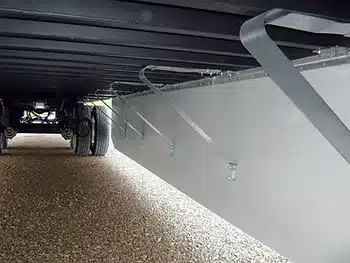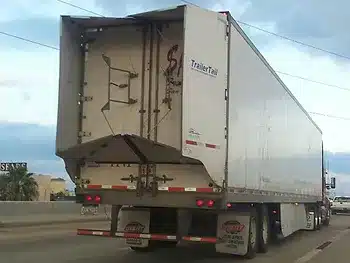Take off your Skirt?
Take Off Your Skirt? Are Trailer Skirts Worth the Expense?
Are Trailer Skirts Worth the Expense?
If you operate in California, all 53-foot box-type trailers — dry vans and reefers — must be equipped with EPA SmartWay-approved side skirts or tail fairings. These devices claim to improve fuel efficiency by 4% to 5% and are required alongside low-rolling-resistance tires.
There are various exemptions depending on fleet size and haul type, but for over-the-road drivers, trailer skirts are often a legal necessity.
An Aviator’s Take on Aerodynamics
With 25 years as a helicopter pilot, I understand airflow and performance. In aviation, parasitic drag — resistance caused by disrupted airflow — affects efficiency. Trailer skirts aim to reduce drag, but the real question is: Do they improve efficiency enough to justify their cost?
Fuel Savings by the Numbers
- Miles driven annually: 120,000
- Fuel price (July 2020 average): $2.43/gallon
- Average MPG: 8
- Estimated 5% fuel savings: $1,822.50 per year

Trailer skirt kit on a dry van
Sounds promising on paper. But as any pilot or seasoned driver knows — speed changes everything.
The Speed Factor
In aviation, translational lift means better efficiency at certain speeds. Similarly, trailer skirts only offer fuel benefits at highway speeds above 55 mph. If you operate mostly in urban or regional settings, skirts won’t save much fuel.
Real-World Driver Feedback
I asked drivers their thoughts. Here’s what they said:

Trailer tail kit on a dry van trailer
“For Van & Reefer drivers — do trailer fairings improve fuel economy or reduce driver fatigue? Share your experience.”
- “Trailer tail = 0.5 MPG gain. Fairings = 0.3 MPG. No wind issues.”
- “Depends on your speed — cruise control helps. It varies.”
- “They increase drag and I think raise rollover risk.”
- “They actually help with wind gusts in my experience.”
- “In Wyoming, trailers with fairings and super singles tip more often.”
Damage Risk and Operational Considerations
Trailers take a beating. From curbs to docks, skirts are often the first to get damaged. Repairs mean cost and downtime.
Bottom Line
A trailer skirt kit costs $1,300 to $2,700. Worth it? That depends on your operation.
If you run consistent highway miles and fuel prices rise, the ROI might work. But for regional routes, windy states, or rough terrain, skirts could be more hassle than benefit.
Evaluate your routes, speeds, fuel costs, and risk factors before investing. This is not one-size-fits-all.
Jay Schmidlapp
President
Freight Girlz